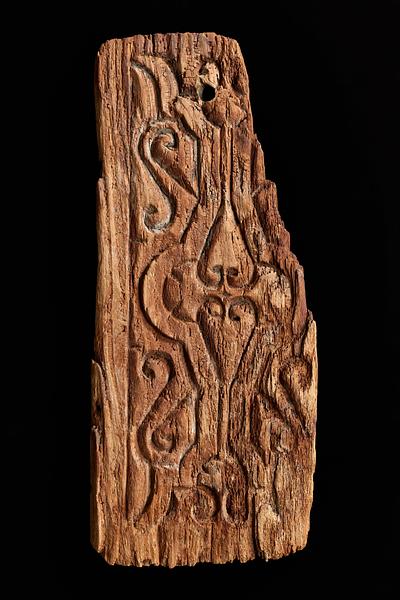This panel probably comes from a door. The front of the panel is decorated with a carved pattern consisting of spade-shaped palmettes, half-palmettes, and scrolled s curves arranged around a vertical symmetrical axis.
The decoration was made in the so-called Samarra style, which emerged in 9th-century Iraq. This style is especially known from palaces and mosques in the Iraqi city of Samarra, which was founded in 836. From the middle of the 9th century, the Samarra style spread to the entire Abbasid empire, including Egypt.
The Samarra style can be described as an increasing abstraction of antiquity’s naturalistic plant decorations divided into three phases. The decoration on this panel is an example of the last phase, in which the abstraction had become predominant. The plant shapes have almost lost all form of recognizability, and it is moreover difficult to distinguish the motif from the background. Decorations of the same type can be seen on two Iraqi stucco panels from the 9th century (
42/1992 and 43/1992).
The late Samarra style is also called “the beveled style” because of its distinctive slanted carvings and rounded contours. Both are clearly visible on this panel.
Later, in the Fatimid period, figurative motifs returned to Egyptian art (
5/1992). This shift is already visible on a wooden panel from the 10th century (
37/2008). The panel was decorated in the Samarra style, but a stylized bird seems to emerge from the beveled pattern.
